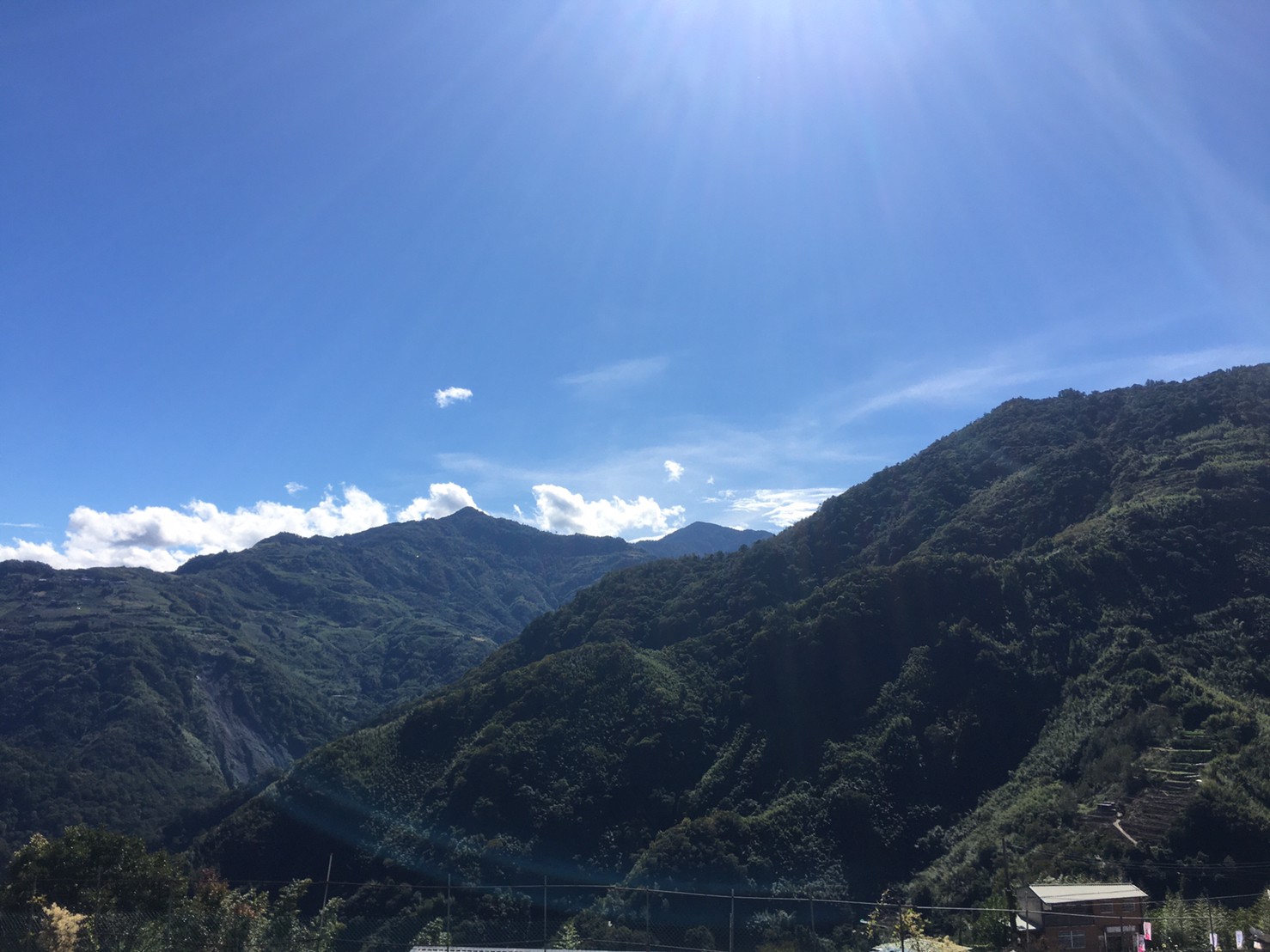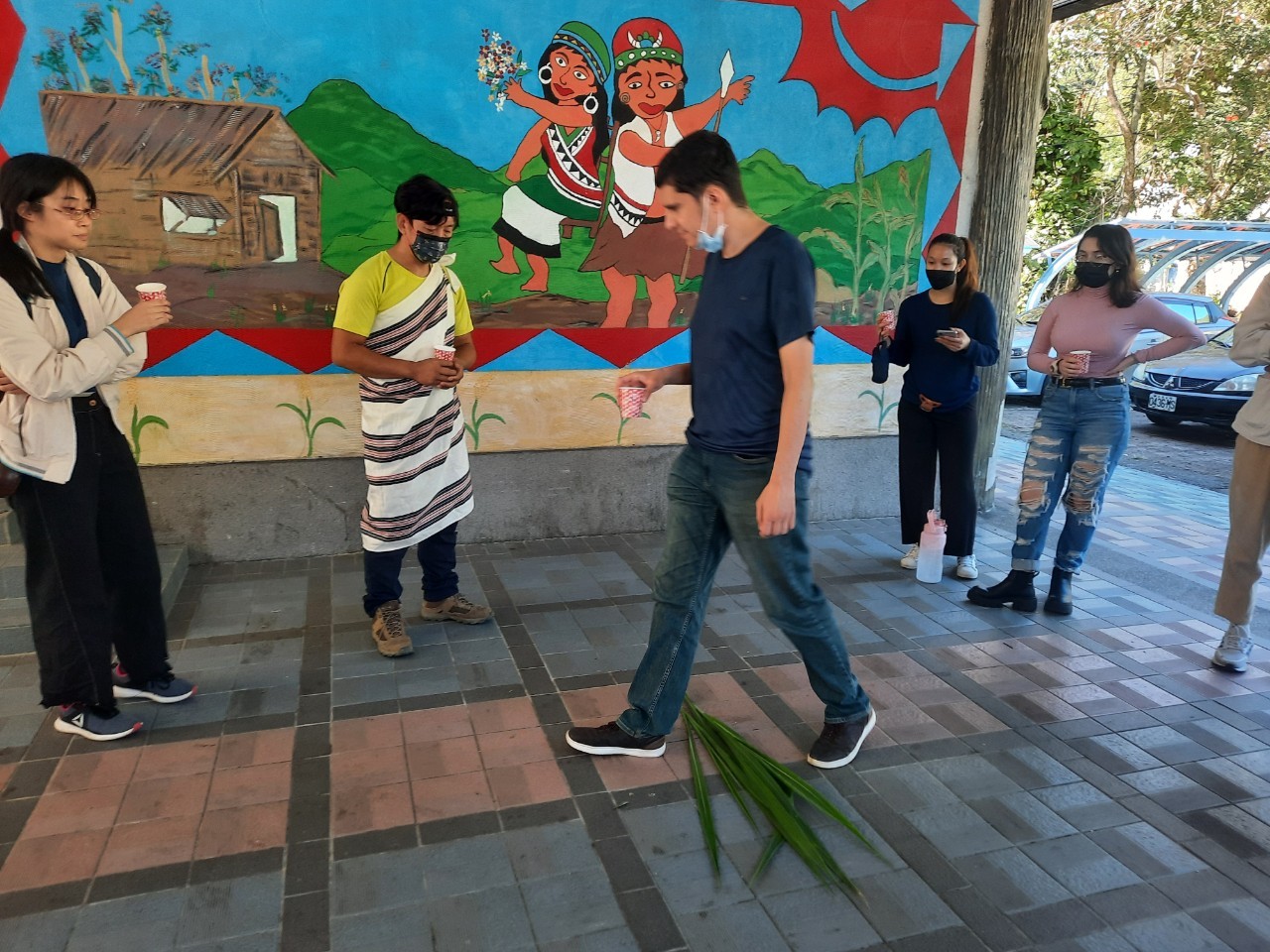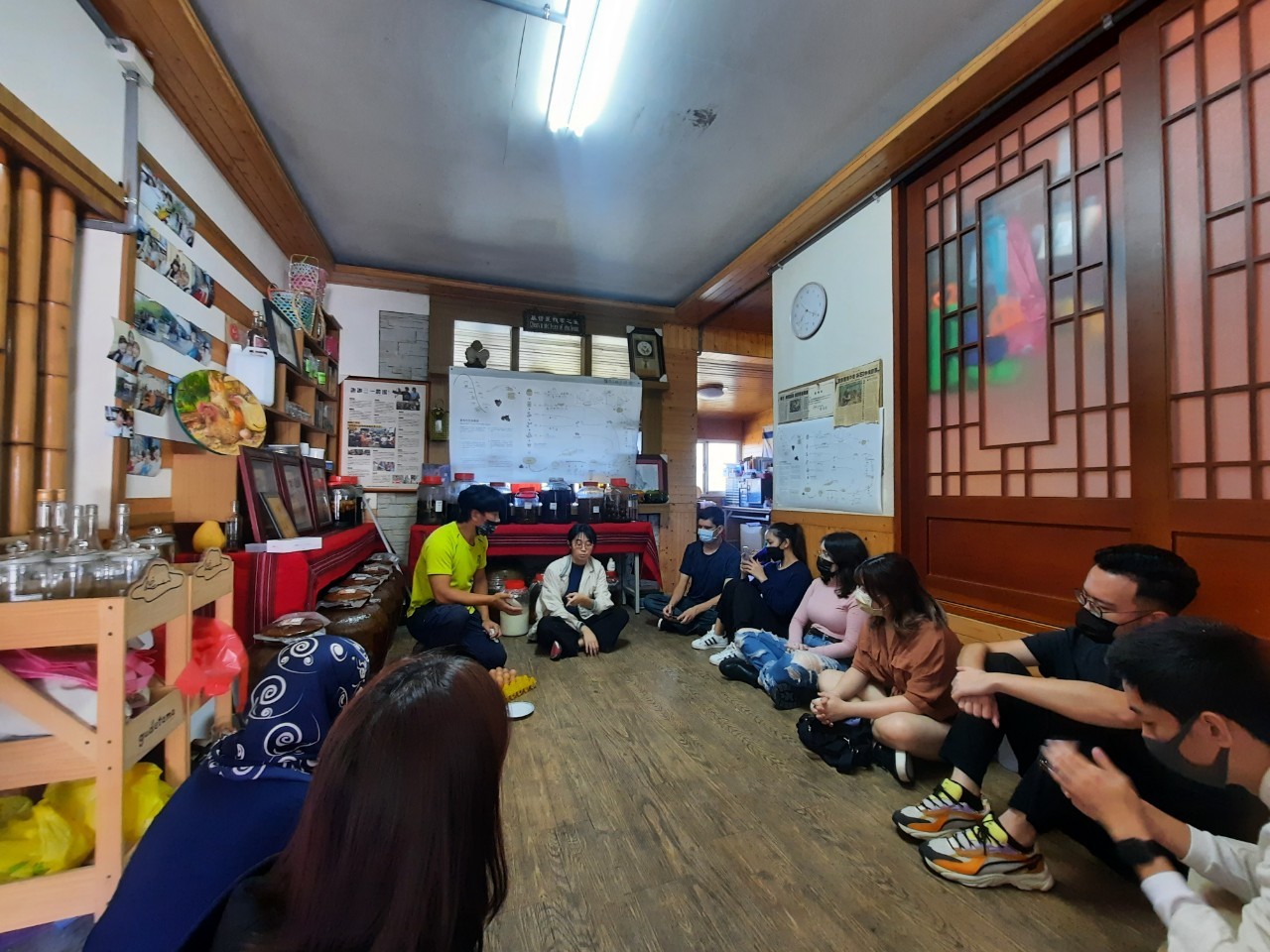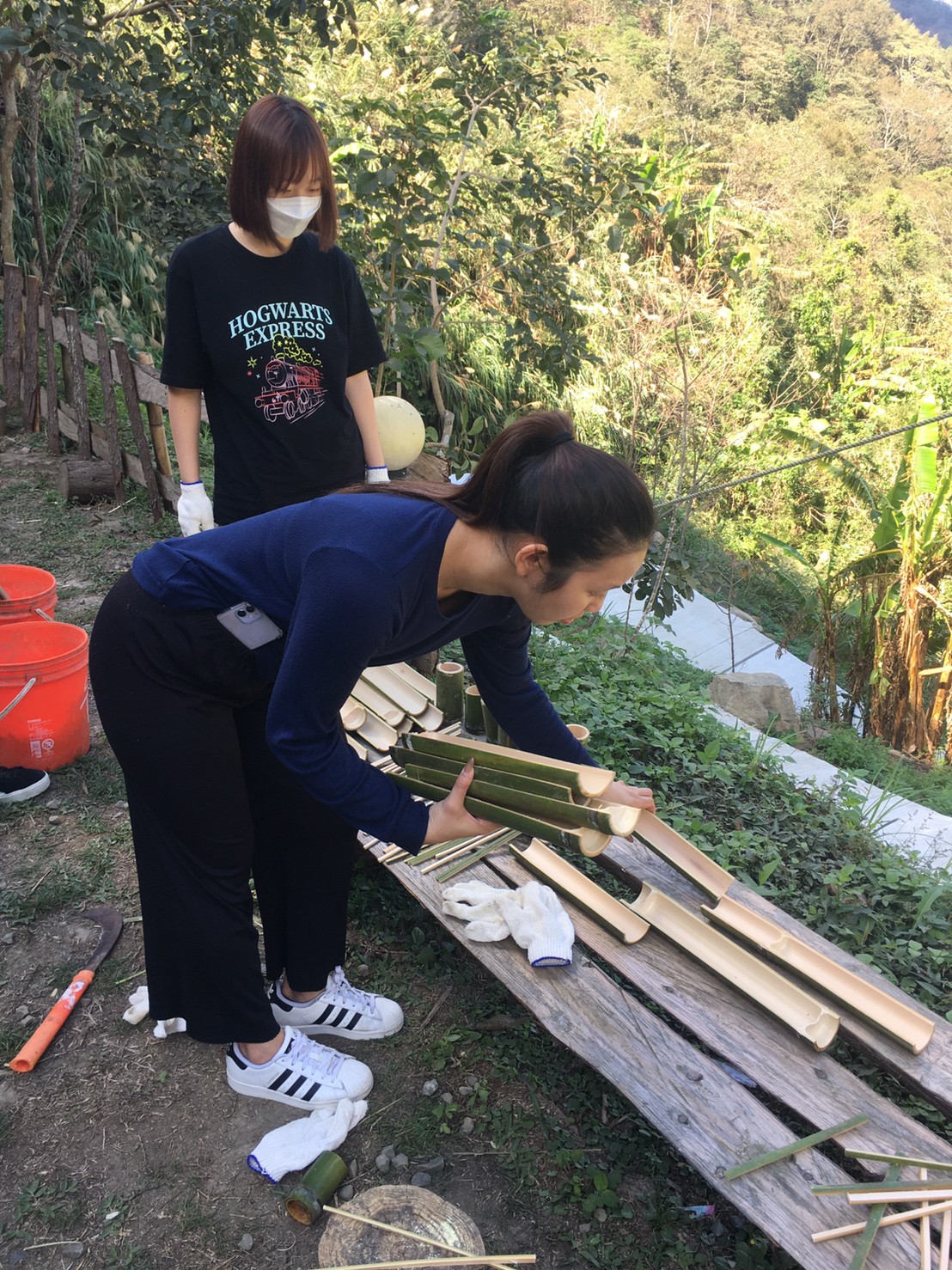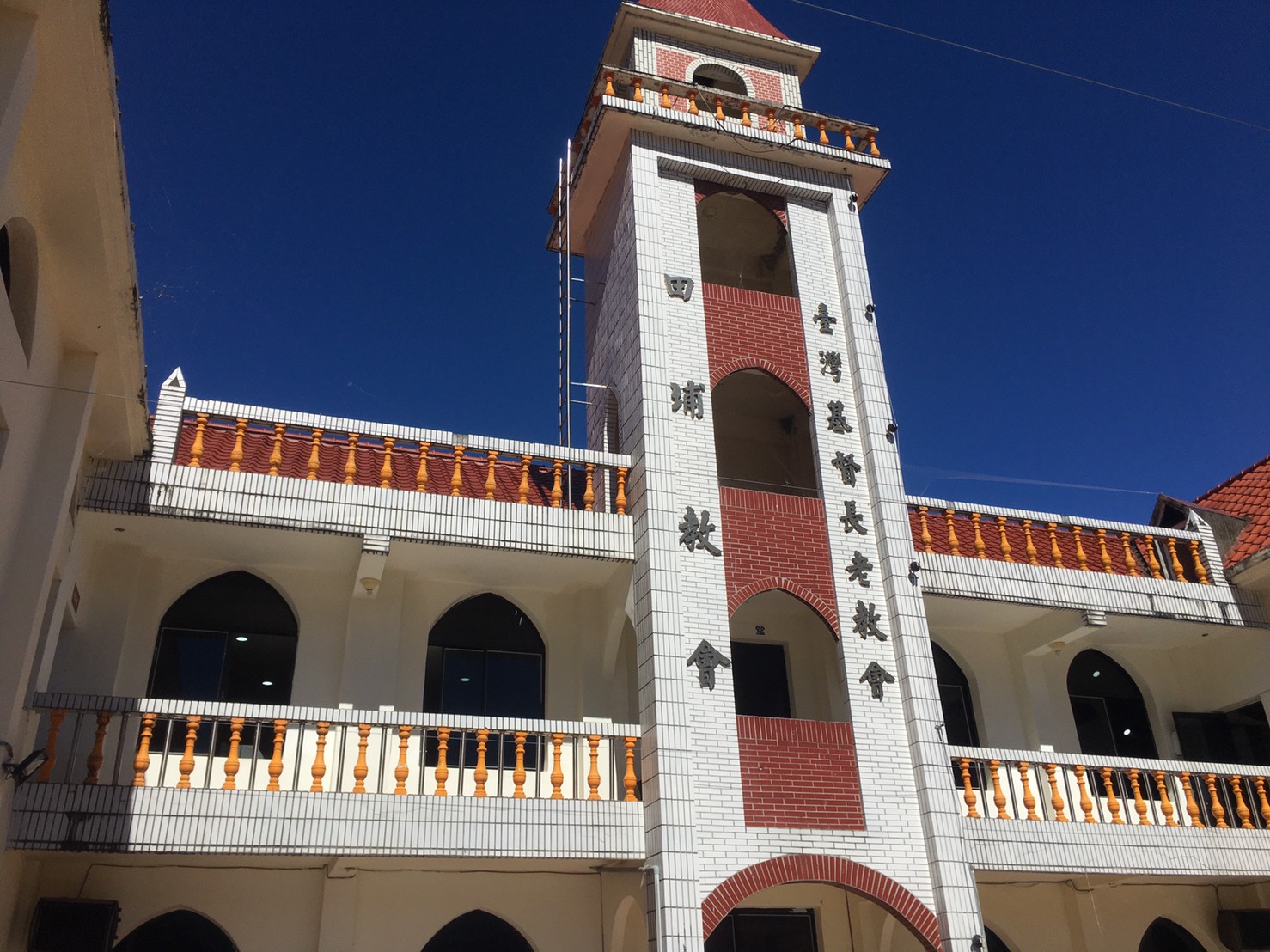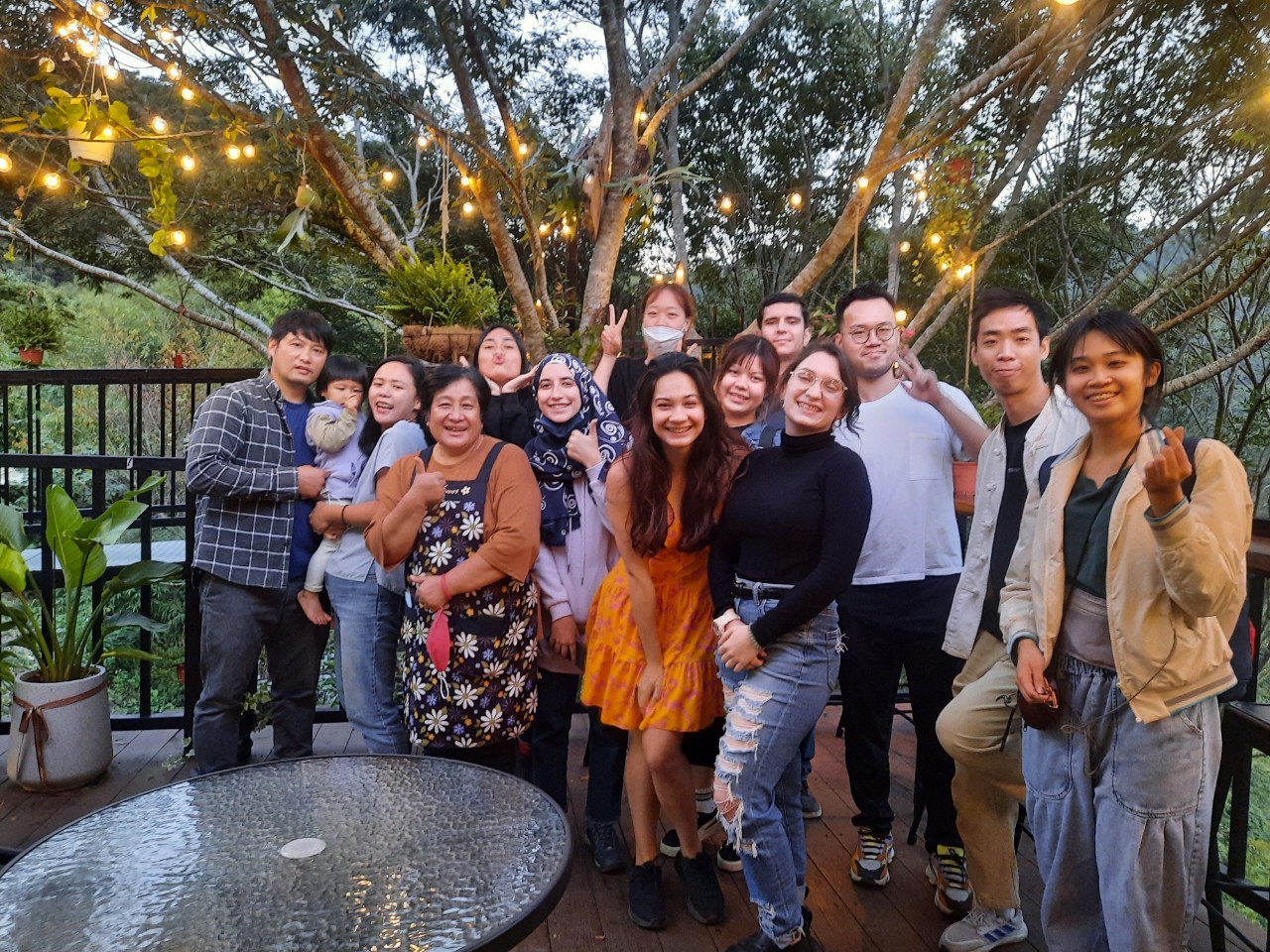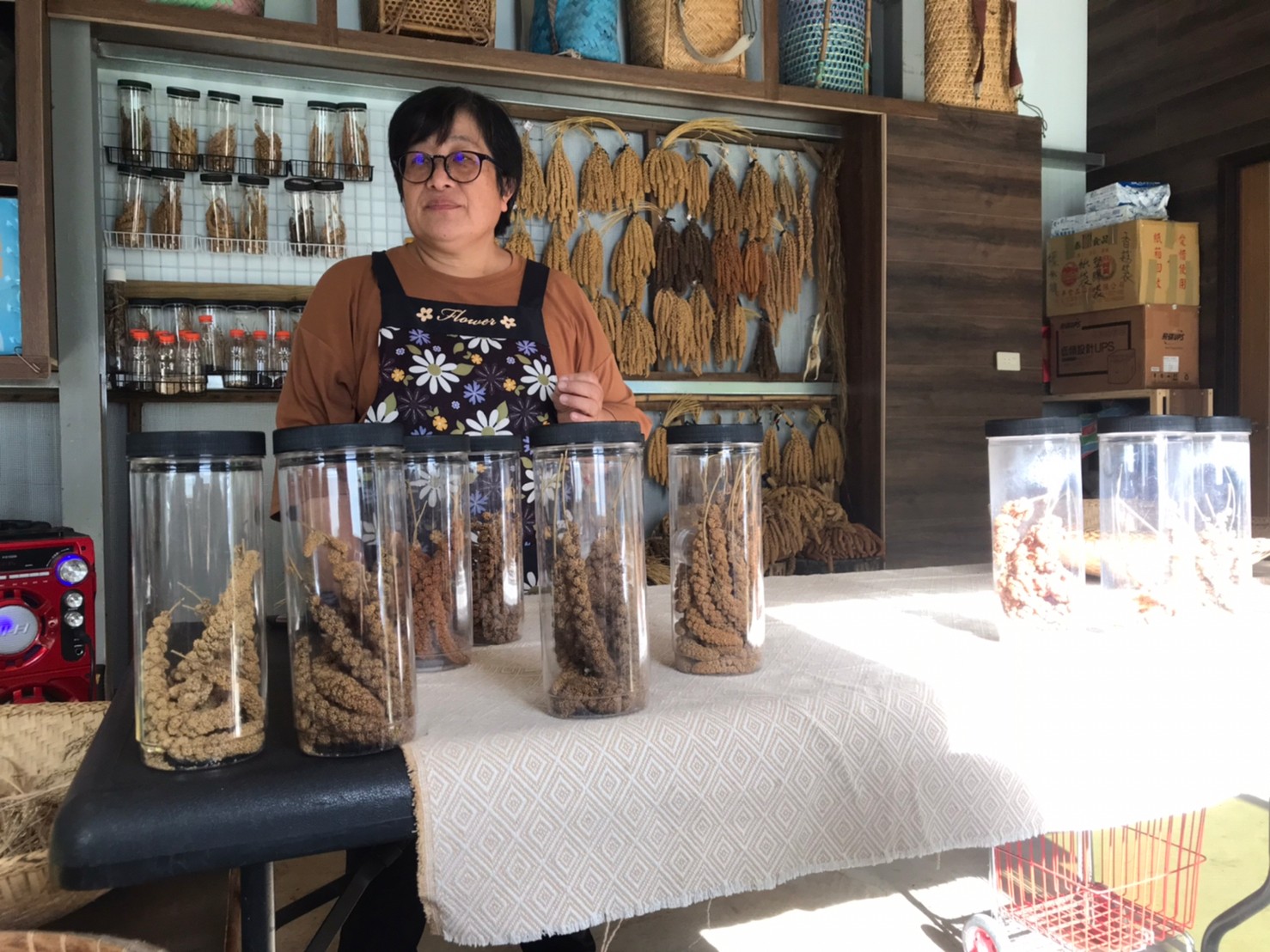【課程心得回顧】政治大學南島國際學分學程與南島研究講座合辦-新竹尖石原鄉田野之旅
學生-徐博彥
很幸運地這個周末是晴朗的好日子,我們開心地啟程迎接尖石鄉泰雅族人的熱情的招待及分享。
煤源部落的「傻瓜農夫」夏禾以20年的光陰,將一生職人的態度及堅持投入於以微生物發酵的飼料及施肥的生態農業,向南韓學習,在尖石深耕,分享給全世界。我們動手做竹子餐具,自煮夏禾可愛的一家人所養殖的豬雞肉及剛剛所見的有機農作物,取之於大自然,再將廚餘及用具還於大自然。我們還體驗了射箭及辨認諸多植物的技巧等的有趣經驗。
田埔部落小米媽媽Pagung先在錦屏大橋介紹此地泰雅族的歷史,特別強調所謂「出草」是一種象徵兩部落衝突和解的方式,這樣的犧牲不是殘暴,不會濫殺無辜,而是一種保持雙方穩定關係的模式。再來我們到和解廣場,同樣地基於過往兩部落因為誤傷彼此,又被日本殖民政府操弄而大肆互殺,需要建立起作為一個象徵團結、警惕彼此的歷史記憶產物。再來又到了開心的實作時間,我們見到40餘種(持續找回)的小米以及54種其他作物,並「親腳」踩小米撥穗。Pagung也協助成立生產合作社,使族人的作物銷售不被其他經銷商剝削,將收入提高。對她而言,這些小米及種種作物不僅是生計的產物,而更是作為泰雅族人文化的根,而她想繼承下去。
回到上述廣場的經歷,Pagung提到日本人先來殖民這裡,再來民國政府來殖民,而現場翻譯只將日本人殖民(colonized)譯出卻不用相同字眼敘述後段漢人社會的到來。我想基本上有兩個問題在其中,第一是此地原民及漢人的經驗及認知下的詮釋的不同,第二是一窺至今仍有張力存在於一個國家內不同民族及族群對於中央政府管理下之間的關係。兩位在地努力的老師讓我們看見小農以及族人交織的文化維護及實作堅持,看見所謂臺灣文化的另一種風采,也讓我們反思關於教育、資源及制度等諸多問題需要討論。
學生-朴曙延
As I became a third-year college student this semester, I was having a boring time due to repeating the same life pattern. While I wanted to make a change in my daily life, I got the information about this 尖石部落文化交流 camp just in time and registered immediately. Even though the main reason for participating was this, I was also interested in the native Taiwanese due to the impact of anthropology class that I am taking this semester. By participating in this camp, I was able to have an unforgettable and precious experience through breaking my bias, learning Atayal people’s culture, and the various perspectives from a lot of countries.
The first thing I remember strongly is the beautiful church called 田埔 at Atayal people’s town. In fact, I unconsciously thought that the natives would be shamanism, but I realized it was my bias. I had no idea that the beautiful church with wonderful scenery is in the deep mountains of Hsinchu. As a same Chiristian with them, it was the most memorable and merciful moment for me. To be honest, I am still unfamiliar with the concept of Taiwan natives, but I have seen and learned about the Atayal tribes’ precious culture through this camp. I could feel that they were making an effort to preserve their own culture such as language and traditions when they introduced them to us. They showed us how to show their respect to their ancestors through a ceremony. Furthermore, we have tried their own lifestyle through making our own spoons, forks and cups with bamboo for the meal, and we made a pancake using the lemon pepper that only their tribes eat. Through these passions, I reflected on myself not trying to protect the ethnicity of Koreans by remembering and protecting their ethnicity and roots, and I am determined not to be ashamed or forgetting our culture even though I live in another country. Lastly, it was fascinating that the nationalities of participants were all different, such as Thailand, The states, Türkiye, France, South Korea, The Philippines, Netherlands, and Taiwan with different regions. It was my first time hanging out with people of so many different nationalities at once. Through the camp with these people, I have heard different eating styles, myths, traditions from those countries, and it was an unforgettable experience for me.
Thanks to this 尖石部落文化交流 camp, I have learn about to not in my bias, how Atayal people lives, and the different life style of various countries. Most importantly, these experiences were made for free! If I have a chance to participate again next time, I will participate right away without hesitation. Also, I will actively recommend it to my friends. I thank God and the Nandao Unit for allowing me to have a precious experience.
學生-Bao Thach
First, I want to say thanks to IPAS for organizing a really enjoyable field trip. I really have a good time and learn a lot of new things during this trip. I’m taking currently the Anthropology of Asian Pacific, in this class, I have read so many papers also classes about Indigenous people as well as Austronesian (南島人)in Taiwan. Therefore, this time I finally have the opportunity to directly participate and obverse the real Indigenous area and Indigenous people’s life in Taiwan.
As a famous Mandarin idiom ''百聞不如一見'', this trip helped me reflect and created a clear view of the knowledge that I have learned.
I really admire how passionate the two speakers are when they talked about agriculture. They always try their best to find solutions for contributing to the sustainable development of the world. I definitely will go back to Hsinchu and other places in Taiwan to explore more about other Indigenous groups in Taiwan.
學生-Paula Tolton
I am thankful for the opportunity given by IPAS to travel to Hsinchu and learn more about Atayal culture. I would like to thank Connie for working so hard to translate the entire weekend for us especially about more obscure topics of microbial farming. The entire first day was illuminating for me about what can be used as fertilizer such as the fermented bones and fish guts. It was inspiring to see how much time and energy he dedicated to learning this craft and sharing his information with others. This whole first day was a great combination of science and cultural immersion by giving us the opportunity to cut bamboo and try the deer meat. As someone who was spent time on farms before I was truly shocked by the manure pile not having a strong scent which really solidified the proof in his work.
For our second day, I enjoyed the switch in topics to learning more about the history of the region and the different tribes. I greatly enjoyed hearing about the struggles of the differing generations and how do they work to pass on the culture as well as the language. Once again I blown away by the knowledge our guide had on millet. I was impressed by her dedication despite calls from her father asking her why she is even bothering. But as she displayed to us, the work she is doing not only serves a scientific purpose but as well as collecting and maintaining the cultural history from the elders. As demonstrated by the ‘gift from god’ millet that actually came from the south but was mixed in with the batch for Hsinchu, we can see the importance of maintaining that cultural knowledge.
學生-狄佳映
I really enjoyed the fieldtrip to Jianshi township, Hsinchu. I actually expected it to be mostly lectures, so I was a bit surprised when it turned out that we would spend most of our time outside. I believe it made it even more interesting, I liked this kind of informal learning. I feel like I’ve learned a lot from Tomi Pagung and Xia He’s explanations, not only about the indigenous culture but also about Taiwan’s environment in general. Before the trip, I’ve only heard about millet, but had no idea how it looked like or tasted like, and I also didn’t know it was part of the indigenous diet for so long. Both Xia He and Tomi Pagung’s efforts in preserving nature by using traditional and environmental-friendly cultivation methods were impressive. Participating in some cultural aspects as well, like archery for example, was also quite interesting.
My only regret is that we didn’t really learn more about the Atayal language, I would have liked to have some kind of introductory course about it, but there was only so much time to do other activities. The organisation of the whole trip also seemed to be a bit wobbly at times. Nevertheless, I’m still grateful about the fact that I had the opportunity to participate in such a trip. Overall, I would definitely take part in a similar trip if given the chance to do so.
學生-Nica Bol
Day 1
The reconciliation ceremony
Our journey begins with a reconciliation ceremony:
You step over a special leaf, which grows in the region and is very resilient, in the direction of the upcoming sun. You drink millet wine, typically all from the same cup, and also offer a pinch on the floor for your ancestors. This ceremony grants you safety whilst traveling through the mountains.
On the farm
The first thing we learn when we arrive on the farm is that ‘Lokah!’ is the Ataya quivalent of 加油!And after getting to know the innovative eco system that was created by mama Sha we take a look at how it works from up close. We take in the amazing view, and cut down bamboo to create our own cutlery and plates, and cups. We eat the freshest food grown on the farm, and it tastes even better from self-made plates. Natural farming entails using no pesticides but instead various fermented resources. Amongst those resources are vegetables, fruits and fish.
Day 2
We start the day with the myths and history of Gaga Tayal at Jinping bridge. The thing that stands out for me the most is the following:
To solve verbal conflicts between two tribe members, the first one to bring back the head of an enemy has the most reason and will win the verbal conflict. It is then solved and to commemorate this process all the skulls of the enemies are lined up. It is called ‘Head hunting’. The tribe members thank the sacrificed enemy, because they resolved conflict, and brought peace to the Ataya People.
At the reconciliation square
We get told that the mountain and forest are a big refrigerator: they always have food. If the time is not right for growing one crop, the tribes can grow another. They never have to be hungry.
The square commemorates the time when the Japanese came to Taiwan and gave guns to opposing tribes on both sides of the river to kill each other. To reconcile a ceremony was developed. The same one we did when starting our journey.
The most important thing to remember is that here, each entity relies on each other - we need to take care of everything: plants, chickens, etc.
The millet farm
The woman who shows us around tells us she must rely upon the knowledge of their elders when growing millet. She started 8 years ago and now has 48 different kinds in her field.
When The government comes to visit they are very surprised to find so many live millet. The various kinds are preserved by actively growing them.
All in all I have learned a great deal about how people from Taiwanese tribes have lived and are living. I look forward to extending my knowledge and visiting the farms again to try out different crops.
